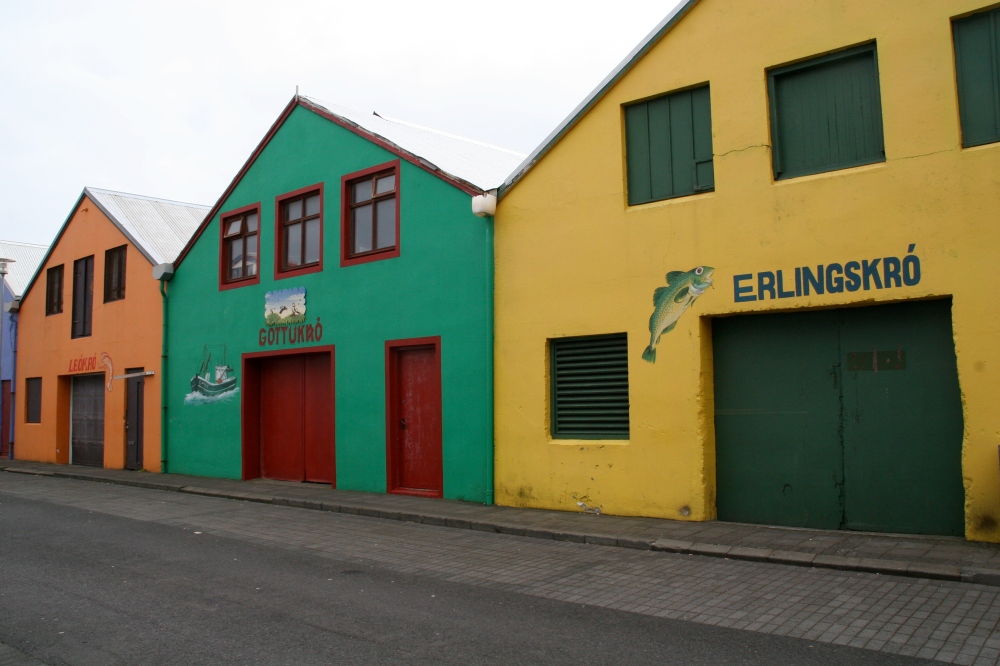Two guest murals from Iceland – this snakelike creature from Reykjavík:

And these harbour decorations in Vestmannaeyjar:

If you can learn anything from Mark Kurlansky’s book The Basque History of the World, it is that there’s a Basque connection to virtually everything, and Iceland is no exception. Basque sailors used to fish and hunt whales in the North Atlantic region and thus came in contact with the island.
At the time, they had developed a pidgin with influences from Romance and Germanic languages to facilitate the communication with people in other parts of Europe. Samples of this pidgin were written down in a Basque-Icelandic glossary from the 17th century, for example the useful phrase presenta for mi berrua usnia eta berria bura, which means ‘give me warm milk and fresh butter’. You can read more about this in Viola Giulia Miglio’s article “Go shag a horse!” (the title derives from one of the entries in the glossaries).
One of the most tragic events in Icelandic history is also related to the Basque fishermen. In the cold autumn of 1615, three Basque ships were crushed against the ice in the Vestfirðir region and sank. Of the 83 crew members that survived, 31 were soon murdered on order of the local sheriff who accused them of theft, but also had the intention of confiscating their belongings and ensuring the Danish trade monopoly. The self-taught scientist and poet Jón Guðmundsson lærði wrote a chronicle about the events a few months later, Sönn frásaga or ‘A True Account’, where he described the immoral massacre. Last year, Jón’s text was published together with English, Basque and Spanish translations in a book called 1615, dedicated to in memory of the sailors who were killed 400 years earlier.
Nowadays the relations between Basques and Icelanders are much more friendly. A few years ago, the friendship association Baskavinafélagið á Íslandi was founded. And last year, a memorial plaque of the massacre was unveiled in Vestfirðir under the presence of descendants of both the victims and the perpetrators, and representatives from the Basque and Icelandic governments.
The Icelandic writer Sjón, co-founder of Baskavínafélagið á Íslandi, has written a fantastic novel called Rökkurbýsnir (From the Mouth of the Whale in English translation by Victoria Cribb, 2011), where the main character is based on Jón Guðmundsson lærði, and Basque whalers also appear. Read it!
Finally, here’s a photo from Bjargtangar, the westernmost point of Europe, where the local hostel has welcoming signs in several different languages, this one representing Baskaland:
